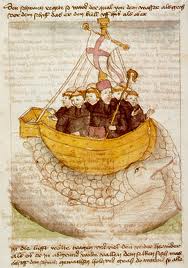Pilgrimage
Around the World Trip (1996 - 97)

In 1996-97, I went on a self-supported, self-initiated 12-month around-the-world Christian pilgrimage. The itinerary included pilgrimage sites and Christian communities in over twenty countries on five different continents. Sample pilgrimage sites included: Iona, Jerusalem, Santiago, Rome, Lourdes and Assisi. Christian communities were visited, including orphanages, hospitals, retreat centers, parish churches, universities, seminaries, and various types of missions. Destinations were in North America, Costa Rica, Mexico, Europe, Kenya, Zimbabwe, Australia, New Zealand, Fiji, Korea and Japan. The pilgrimage included interaction with people and communities representing a wide diversity of ethnic backgrounds, denominational traditions, and theological viewpoints. I ended the year with a forty-day hermitage experience alone in the Ozark Mountains of northern Arkansas.
Resulting Published Works:
Voices in the Wind (Cross Cultural Press: South Bend, 2003)
“Journey of Faith”, a series of twenty articles published by the Arkansas United Methodist (1996-1997)
Journey of Faith (1997), edited reprints of the original articles with photos and supplemental material
Resulting Published Works:
Voices in the Wind (Cross Cultural Press: South Bend, 2003)
“Journey of Faith”, a series of twenty articles published by the Arkansas United Methodist (1996-1997)
Journey of Faith (1997), edited reprints of the original articles with photos and supplemental material
Santiago de Compostela (1999, 2001)

The French Road
During the summer of 1999, I walked 500 miles of the French Road of the Camino de Santiago (Roncesvalles - Santiago - Fisterra).
Resulting Works
“Discovering the Camino de Santiago”, a series of six articles published in the Arkansas United Methodist (Spring, 2000)
“Camino de Santiago: Psalms, Photos, and Reflections” (see below)
Permanent collection: St. Jude National Pilgrimage Shrine, Baltimore, Maryland
La Ruta de la Plata
In April, 2001, I walked 300 miles of the La Ruta de la Plata (The Silver Road), the southern branch of the Camino de Santiago, from Mérida to Astorga, Spain.
Resulting works
"An Unforgettable Good Friday on a Pilgrim’s Journey”, Arkansas United Methodist (March 15, 2002)
During the summer of 1999, I walked 500 miles of the French Road of the Camino de Santiago (Roncesvalles - Santiago - Fisterra).
Resulting Works
“Discovering the Camino de Santiago”, a series of six articles published in the Arkansas United Methodist (Spring, 2000)
“Camino de Santiago: Psalms, Photos, and Reflections” (see below)
Permanent collection: St. Jude National Pilgrimage Shrine, Baltimore, Maryland
La Ruta de la Plata
In April, 2001, I walked 300 miles of the La Ruta de la Plata (The Silver Road), the southern branch of the Camino de Santiago, from Mérida to Astorga, Spain.
Resulting works
"An Unforgettable Good Friday on a Pilgrim’s Journey”, Arkansas United Methodist (March 15, 2002)
Camino de Santiago: Psalms, Photos, and Reflections: Artist Statement

I was first introduced to the
pilgrimage to Santiago de Compostela in Spain during an undergraduate class on
medieval images. I loved the class, but, at the time, I attributed my
interest to medieval church history in general.
Then in 1996, I felt a ‘call’ to take a pilgrimage, and for most of a year (1996 – 1997), I journeyed to Christian communities and pilgrimage sites in twenty countries and six continents. From the start, my itinerary included a visit to Santiago. I intended to spend some time on the Camino – the ‘Road to Santiago’ – however, the weather was bad, the logistics were unfavorable, and I was poorly equipped for the walk. I had to settle for a train ride to the pilgrim city, but I vowed to return someday as a proper pilgrim.
That chance came in the summer of 1999. Starting at Roncevalles near the French border, I walked 500 miles along the pilgrimage road before arriving into Santiago some five weeks later. Although the route was crowded with pilgrims from around the world, I still managed countless hours of solitude and meditation through the vast Spanish landscape.
I spent most of the first day taking a mental inventory of everything that I had with me. Two days later, I embarrassingly mailed home seven pounds of extra supplies, including my heavy K-1000 Pentax camera, opting to record the Camino’s images with a simple ‘point and shoot’ camera.
Camino de Santiago: Psalms, Photos, and Reflections combines, in part, my inward and outward journey. Beginning consecutively with Psalm 23, I meditated on a different psalm each day. In this presentation, a photo and a verse from the corresponding psalm represent each day of my journey. While these images will provide some impressions of the Spanish landscape through which I walked, it is hoped that Camino de Santiago will facilitate a journey of meditation and reflection in the imaginations of the viewer.
Rodney Aist
Camera: A ‘point and shoot’ Pentax IQZoomEZY.
Film: Kodak Gold 100/Kodak Gold 200
Then in 1996, I felt a ‘call’ to take a pilgrimage, and for most of a year (1996 – 1997), I journeyed to Christian communities and pilgrimage sites in twenty countries and six continents. From the start, my itinerary included a visit to Santiago. I intended to spend some time on the Camino – the ‘Road to Santiago’ – however, the weather was bad, the logistics were unfavorable, and I was poorly equipped for the walk. I had to settle for a train ride to the pilgrim city, but I vowed to return someday as a proper pilgrim.
That chance came in the summer of 1999. Starting at Roncevalles near the French border, I walked 500 miles along the pilgrimage road before arriving into Santiago some five weeks later. Although the route was crowded with pilgrims from around the world, I still managed countless hours of solitude and meditation through the vast Spanish landscape.
I spent most of the first day taking a mental inventory of everything that I had with me. Two days later, I embarrassingly mailed home seven pounds of extra supplies, including my heavy K-1000 Pentax camera, opting to record the Camino’s images with a simple ‘point and shoot’ camera.
Camino de Santiago: Psalms, Photos, and Reflections combines, in part, my inward and outward journey. Beginning consecutively with Psalm 23, I meditated on a different psalm each day. In this presentation, a photo and a verse from the corresponding psalm represent each day of my journey. While these images will provide some impressions of the Spanish landscape through which I walked, it is hoped that Camino de Santiago will facilitate a journey of meditation and reflection in the imaginations of the viewer.
Rodney Aist
Camera: A ‘point and shoot’ Pentax IQZoomEZY.
Film: Kodak Gold 100/Kodak Gold 200
Celtic and Anglo-Saxon Pilgrimage

Jerusalem Pilgrimage

Willibald of Eichstätt (707 - 787)

My Ph.D. thesis, published as The Christian Topography of Early Islamic Jerusalem: The Evidence of Willibald of Eichstätt (700 - 787 CE), is a study of the life and travels of the Anglo-Saxon pilgrim, Willibald, who traveled to Jerusalem in the 720s CE and left an account of the Holy City in the text, Vita Willibaldi.
Born in 700 CE in the Anglo-Saxon kingdom of Wessex, Willibald of Eichstätt (700-87 CE) was raised as a child oblate in the monastery of Bishop’s Waltham.At the age of twenty, he embraced the life of a peregrinus ex patria. Permanently leaving his British homeland, Willibald’s first destination was Rome and the tomb of St Peter. Less than two years later, seeking ‘a more remote and less known place’, Willibald departed Rome for the city of Jerusalem. His oriental travels, which included a two-year sojourn in Constantinople, lasted nearly seven years. Upon his return to Italy, Willibald joined the recently re-founded monastic community of Monte Cassino, where he played a significant role in the revitalization of the famous Benedictine monastery. A decade later, Pope Gregory III (731-41) summoned Willibald to join his kinsman Boniface (c. 675-754) in the Anglo-Saxon mission in Germany. Boniface entrusted Willibald with the area of Eichstätt in northern Bavaria, where he served for over forty-five years as the founding bishop of the diocese until his death in 787 (photo: mosaic of St Willibald in the Church of the Dormition, Mt Sion, Jerusalem).
Born in 700 CE in the Anglo-Saxon kingdom of Wessex, Willibald of Eichstätt (700-87 CE) was raised as a child oblate in the monastery of Bishop’s Waltham.At the age of twenty, he embraced the life of a peregrinus ex patria. Permanently leaving his British homeland, Willibald’s first destination was Rome and the tomb of St Peter. Less than two years later, seeking ‘a more remote and less known place’, Willibald departed Rome for the city of Jerusalem. His oriental travels, which included a two-year sojourn in Constantinople, lasted nearly seven years. Upon his return to Italy, Willibald joined the recently re-founded monastic community of Monte Cassino, where he played a significant role in the revitalization of the famous Benedictine monastery. A decade later, Pope Gregory III (731-41) summoned Willibald to join his kinsman Boniface (c. 675-754) in the Anglo-Saxon mission in Germany. Boniface entrusted Willibald with the area of Eichstätt in northern Bavaria, where he served for over forty-five years as the founding bishop of the diocese until his death in 787 (photo: mosaic of St Willibald in the Church of the Dormition, Mt Sion, Jerusalem).
Recommended Reading
Under construction